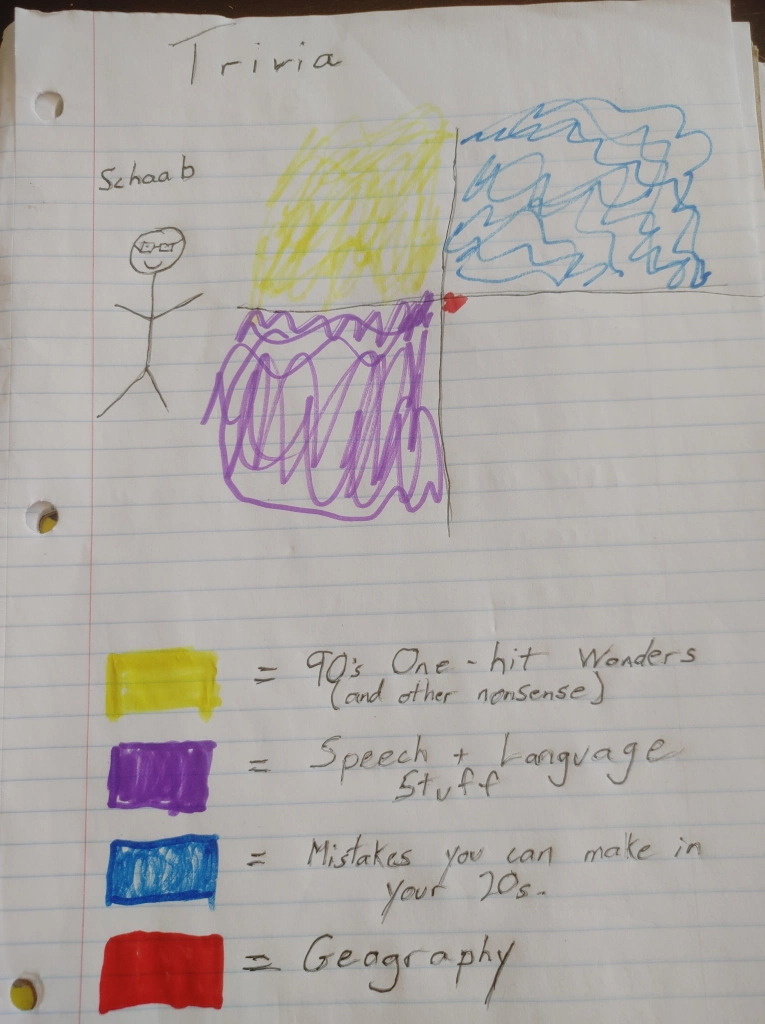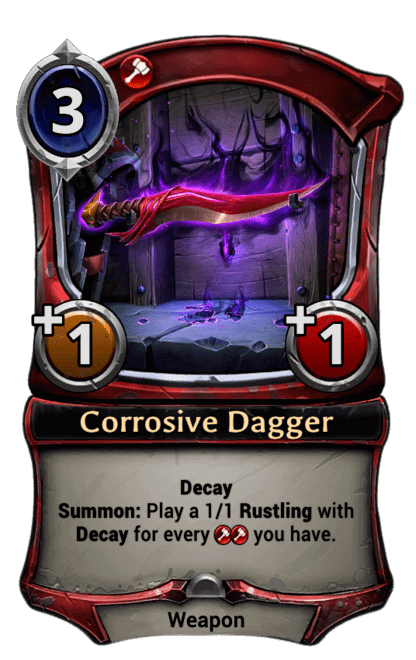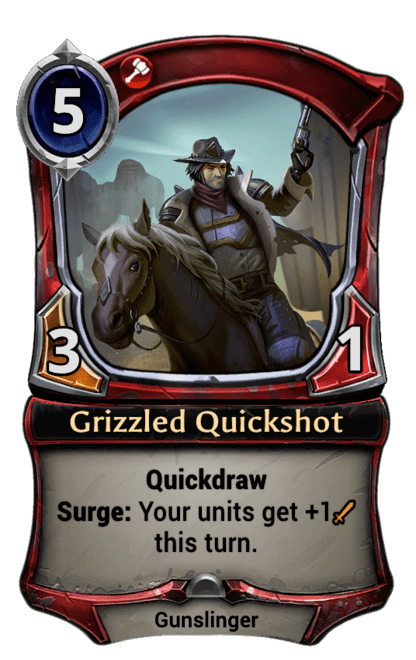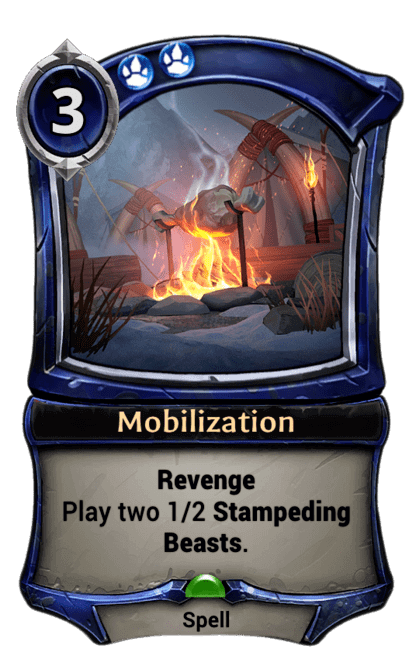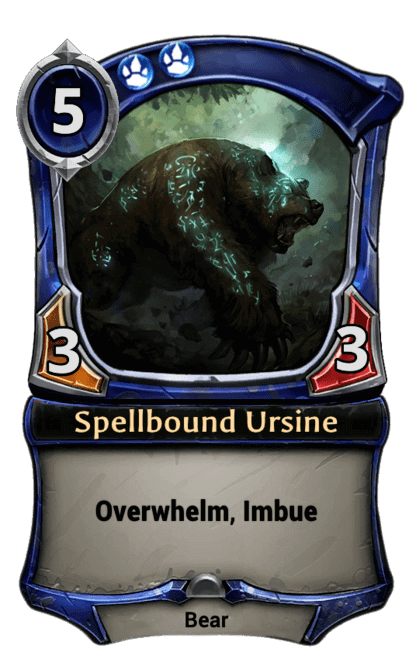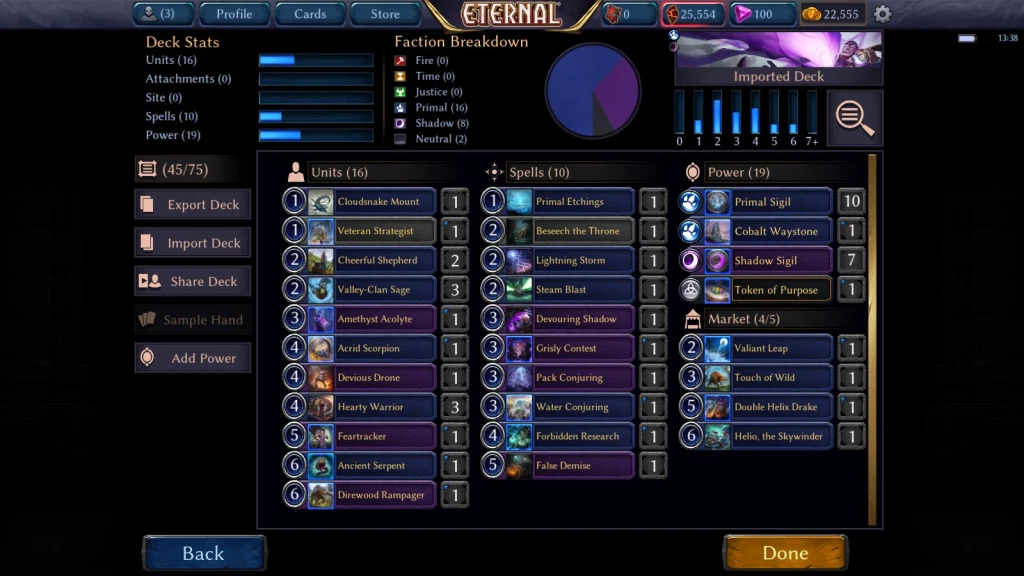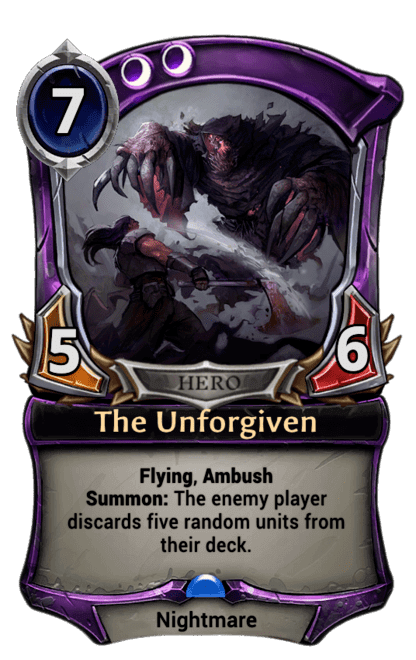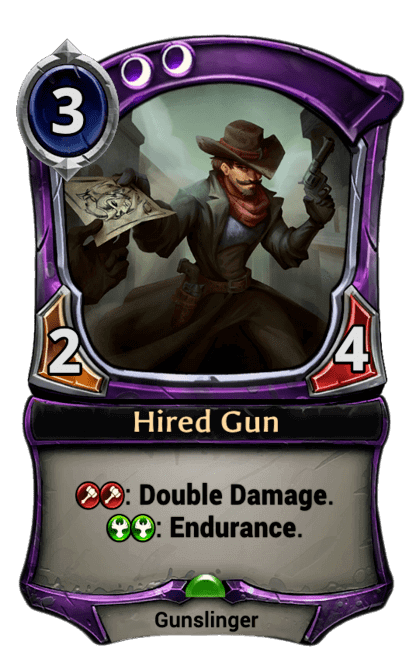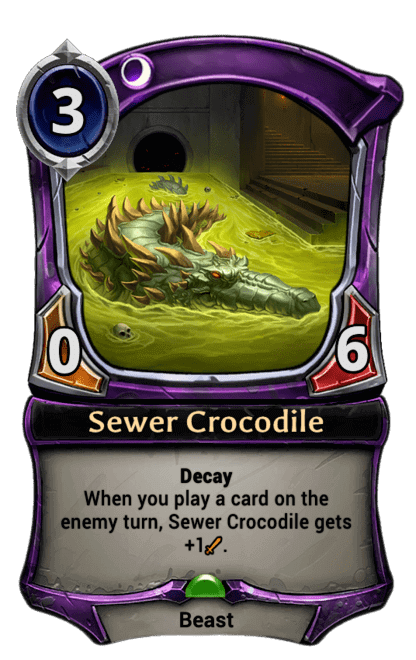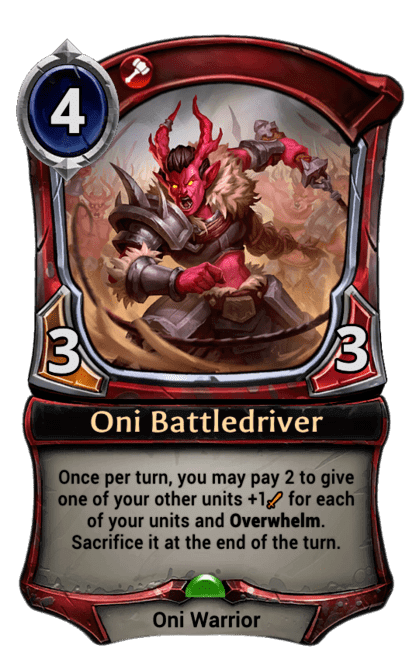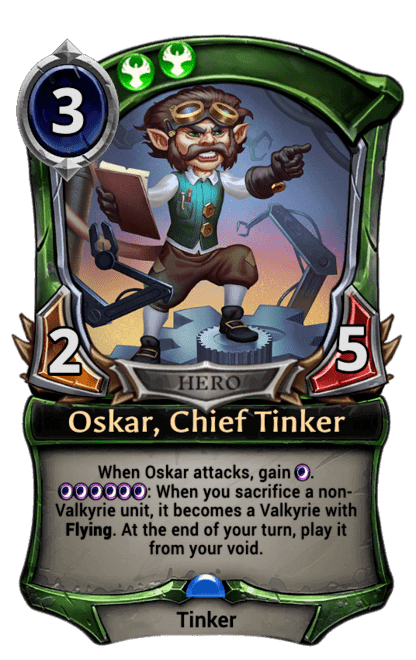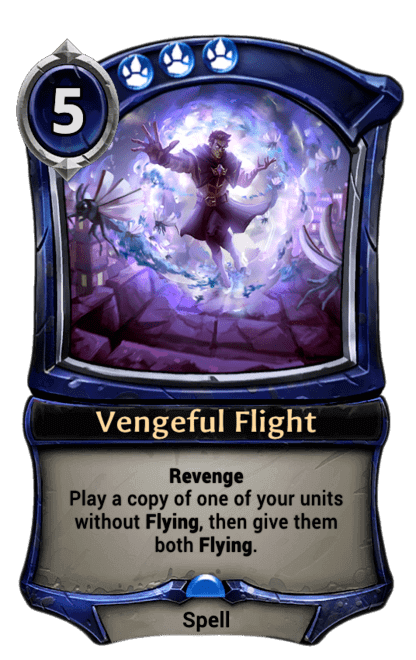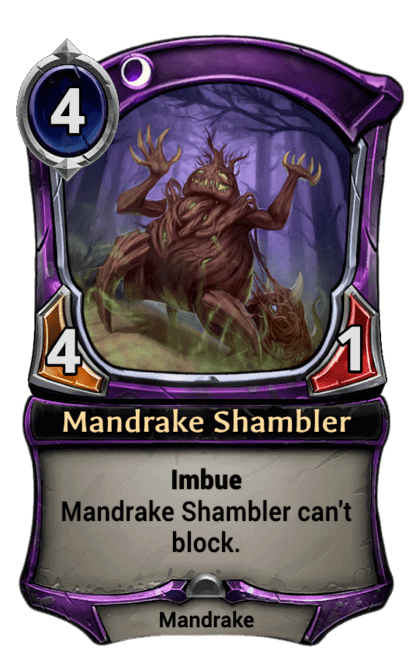Quadrant Theory Part 2 - Deckbuilding and Planning
Guide by Schaab - October 5, 2020
Table of Contents
This article originally appeared at https://letstalklimited.wordpress.com/2020/09/25/quadrant-theory-part-2-deckbuilding-and-planning/
Trivia Night
You love trivia (You sound great. We should hang out). Twice a week, without fail, you go to trivia night at the Local Grande Saloon. You have a core group that’s pretty reliable but your team, Trivia Tron, is a welcoming bunch that’s never the same twice. Your friends, while all lovely and charismatic people, have different areas of strength that you come to recognize over time. Jeff can’t help you with Shakespeare’s final play (The Tempest) but he is by far the most likely to know the first American-born hockey player to win the Conn Smythe Trophy (Brian Leetch, New York Rangers, 1994). My friend, Ted, knows all of the Oscar winners going back to who cares. My ex’s best friend specialized in emphatically yelling the wrong answers in my face. We all have our talents.
Over time, you come to realize that Trivia Tron does best when all of your teammates know a little bit about everything. The people you are happiest to see on your team have read some books, binged a bit of Netflix, are familiar with sports, and don’t insist they’re correct unless they’re absolutely certain of it. In Be Boring, I argued that you want to draft limited cards and decks with a similar profile: not spectacular in any one area, but reliable, consistent, average to above average in most situations, and usually won’t lose you the game.
You could probably even evaluate your teammates with Quadrant Theory if you had a spare few minutes and were really insistent on pushing through with this trivia analogy. As luck would have it, I have a special preview prototype card for the 2020 Trivia Team draft. Let’s see how this work of art fits in to Quadrant Theory:
Modesty aside, I’m a fantastic trivia teammate. As you can see, I’m incredibly strong in the 90’s One-hit wonder quadrant, which also includes nonsense and general trivia. If I (visual approximation above) walk in to your LGS on trivia night, you should invite me to sit at your table. If the night’s theme is Speech & Language Stuff or Mistakes You Can Make In Your 20’s, you can probably start celebrating early. But let’s say I walked into a dreadful, joyless building that only has Geography themed trivia. In that dreary place, I’m an anchor of a teammate. You should hide your head and pretend you don’t see me. It takes my brain a few seconds to process words like “southwest” and then I have to double-check myself.
The Jeopardy category is Rivers: “You can do this, Schaab. You can definitely think of five different rivers. The Nile. The Mississippi. River on Firefly was such a great character. Zoey too. And Simon. All of ‘em really. Such a shame. The Nile.”
I’m a strong trivia teammate in most instances, but my game has serious flaws. There are definitely trivia nights and categories where I’m below average even though I’m a great all-around player. I’m sharing my shameful Jeopardy weaknesses with you to help illustrate a general truth: Context matters. A lot. This is true when drafting limited cards, putting together a trivia team, and in most life matters.
Evaluating Cards
Quadrant Theory was originally conceptualized as a card evaluation tool by Brian Wong, former co-host of Limited Resources. LSV expanded its application in a 2018 article and episode of Limited Resources, which serves as the basis for this article. In Part 1, I described the Quadrant Theory framework and how it can be applied to individual cards. It’s a tool that I use to evaluate cards when I look at a new set, am deciding between two draft picks, or doing a chaos draft at my LGS with cards I’ve never seen. The ability to evaluate individual cards is a very useful skill but it’s only one small piece of the limited puzzle.
Pick order lists/ratings/rankings are fun and I always read them. Pack 1, Pick 1 is one of my favorite games. For the most part, though, pick orders are useless after you’ve selected your first few cards. When you’re deciding between two cards in Pack 2, Pick 5, the question is no longer “which of these cards is better?” the question becomes “which of these cards is better in this deck?” Quadrant Theory, when applied to your deck as a whole, can help you answer that question repeatedly as you navigate your draft. You don’t take the card that’s better in a vacuum. You take the card that excels in the quadrants your deck wants to focus on.
Have a Plan
Try as I might, I can’t describe quadrant theory as it applies to deckbuilding without talking about a pillar of LSV’s approach: Have a plan. It’s the concept he talked about on his first episode of Limited Resources and they just revisited the topic in a recent episode. Like a lot of the best gameplay advice, it’s really simple. Have a plan, stay open while you draft, figure out if you should attack or defend, etc.: all simple. It’s the correct application of these simple concepts and a million others that separate the good drafters from the Hall of Famers.
If you have a plan while you draft, build your deck, and play your games, you are miles ahead of some opponents. You should start planning long before you shuffle your cards and consider your opening seven. Start planning the moment you draft your first card. What kind of deck would that card be best in? Think about what you want the game to look like when you cast this card. Think about what kind of cards you need to achieve a game state like that.
When it’s time to pick your second card, you should still just take the best card in the pack. If you’re deciding between two cards that seem close, though, take the one that best fits into the ideal deck you imagined for your first pick. Lean into your first pick, don’t force it. If you’re having a hard time figuring out the difference between leaning and forcing – yep. Right there with you. Welcome to limited. It’s one of the hardest parts of draft because you have to fight against all of your conscious and subconscious biases. If you draft the hard way, sometimes it’s not always clear what your plan should be until later in the draft. That’s OK! That happens sometimes and is part of the learning process. But you should be planning to have a plan at some point in the draft.
If you want to improve your draft process, I highly recommend you find a streamer(s) that you trust and watch their drafts. I want to constantly, mercilessly harass @bettorup while I watch him draft. I can walk away while he’s making his second pick, do some laundry, take the dogs to the park, get dinner started, and when I get back to the stream: Excellent, he’s on pack 1, pick 5. Truthfully though, I joke about it because this is an area of his game that I should emulate. We have all the time in the world to make these choices and I don’t use that time well. You can (and should) ask @bettorup about any card in any of his decks and he can explain why it’s there (see footnote). Find a streamer that you trust, ask thoughtful questions, and then just listen.
If you have a plan, you’re doing great. Now it’s time to think about your opponent’s plan. I played against the aforementioned @Bettorup the other day. His first turn: justice source, Noble Protector. I know he drafts with a plan and every card in his deck has a purpose, so my thought process went something like this. There’s at least two Siphoner Paladins in the deck. Maybe three. He’s probably playing Argenport. Can my hand afford to play around a turn three Siphoner Paladin and 3/5 relic weapon? If I do have a way to play around it, can I still use all of my power in the next few turns? If don’t have a way to play around it, it’s time to play my cards and hope he doesn’t have one in his hand. Noble Protector doesn’t go in decks that win quickly, so his plan is to make the game go long. My deck also wants the game to go long, but is there a chance I’m actually the aggressor in this game? One of my best cards is Shen-Ra Speaks and that’s useless if he’s going to kill me with a weapon. I might have to go on the offensive even though that’s really not what this deck is built to do. Then again, I have Maeve, Walker of Aeons in this deck, so there’s a chance that my long game is better than his.
This is a different Bettorup decklist. Based on his turn 1 play, I thought I might be playing against a deck that looks like this:
Turn 2, he plays a primal source, and the thought process starts all over again. That game lasted 29 turns. I lost. Siphoner Paladin had nothing to do with it. It was awesome.
I don’t always think so much about my opponent’s plays. Honestly, if someone I’d never heard of did the same thing on turn 1, I might think “hm, they’re playing bad cards. Their deck might be bad.” When you’re in a tournament setting, though, your thought process can go pretty deep and should consider the opponent’s plan. It’s impossible to know their exact plan, but you can use all the information available to you (i.e. the cards they’ve played) to draw some reasonable conclusions.
Let’s look at which quadrants your typical limited archetypes want to focus on and then we’ll look at some reasonable P1P1 choices and how you can start planning around the
Aggro Decks
Quadrants to focus on: Developing and Ahead.
Less important: Parity
Least important: Behind
Your plan is to get ahead and stay ahead. Sure, you might play a game on the draw against another aggro deck, but you’re planning to be the aggressor most of the time. Pack 4, Pick 5 you have two reasonable choices for your Skycrag deck: Spellbound Ursine and Grizzled Quickshot. These are both defensible ways to spend 5 power. You could put either of these cards in your deck and you wouldn’t be incorrect, but one is more correct than the other in your typical skycrag deck. Even if you didn’t intentionally draft a go-wide deck, your overall good cards (e.g. Mobilization, Corrosive Dagger) happen to make tokens. There are game states and situations where the bear would be the better card, but most of the time you’re going to get more value out of the 5 power you spent on the Grizzled Quickshot.
Let’s say you didn’t even realize that some of your cards make tokens. All you know is that you’re trying to draft an aggressive deck. Aggressive decks want to focus on two quadrants: Developing and Ahead. So you look at both cards in Quadrant Theory and see which one is better in those areas. It’s important to note that both of these cards perform positively in the two quadrants. Like I said earlier, neither of these choices would be incorrect, but one is more correct than the other based on your build. The Grizzled Quickshot excels when you’re ahead because it buffs itself and at least the one other unit you’re presumably attacking with.
If you didn’t know the first thing about Argent Depths archetypes, didn’t realize there were token synergies in skycrag, and evaluated the Grizzled Quickshot and bear purely in terms of which one performs better in the quadrants aggro decks want to focus on, you’d arrive at the correct conclusion. The Grizzled Quickshot is a disaster when you’re behind, but you don’t care about that. That’s not part of your deck’s plan. When you truly commit to building an aggressive deck, you’re effectively conceding the “behind” quadrant. How cards perform in that quadrant should no longer be part of your card evaluation because it’s not part of your deck’s overall plan.
Control Decks
Quadrants to focus on: Behind
Less important: Developing and Parity
Least important: Ahead.
You’re going to spend very little time in the “ahead” quadrant. Most of your cards are focused on reaching parity. I eloquently described this as “Don’t Die” while writing about Feln Control but I guess you could also call it “Make sure you survive the developing stage.” You want your individual cards to contribute to your overall plan of extending the game. Hearty Warrior does that far more effectively than Galeprowler does.
When you build a true control deck, your win condition can be almost anything. You’ve controlled the board, you have more resources than your opponent, and you just kill them with whatever is left. Bad win conditions are almost a point of pride for control players. I wasn’t kidding when I said False Demise could be your whole win condition in a Feln Control deck. Ideally, you have one or two more ways to win, but true control decks really are built with very few actual win conditions.
A recent Feln Control list of mine
“An interesting strategy” an opponent said to me during a game in which I had about 7 power among my 9 units. Developing phase survived, parity achieved. Then I played Water Conjuring, took a Storm Prowler, and killed them with the 10/10 flyer. Invoke can be a win condition, though it’s not a reliable one. Invoking a Storm Prowler wasn’t an exact plan. If the invoke didn’t work out so well, the game would have just continued on until I found one of my other win conditions. You don’t need many – just make sure they’re effective in getting you ahead when the time comes.
@Patomaru, of the Farming Eternal podcast recently asked me how his feln control deck, which was full of removal spells, was supposed to win games. “How well does a 1/1 Frog (Two Polymorphs and Changeestik in the deck) block a 6/4 elephant?” was my way of saying this: When you’ve effectively dealt with all of your opponent’s meaningful creatures, your unspectacular ones can get the job done.
Midrange Decks
Important quadrants: All of them
Be Boring is a decent blueprint for your typical midrange deck if you’re new to draft. While it does provide a framework for overall deck construction (i.e. curve, cards that affect the board), it also assumed the reader had a certain level of knowledge about archetypes (I often reference taking cards that your deck wants. But how do you know if your deck wants an 0/5?). LSV speculates that most people think aggro is easy to draft, control is difficult to draft, and midrange is medium. He argues that aggro and control are actually easier than midrange. Once you know how to build a control deck, you can apply that formula across formats. LSV says it’s the same for aggro decks. That’s not true ::in my experience:: because I haven’t spent enough time drafting aggro decks. For me, control and midrange are easy to draft. Aggro is difficult. I suspect aggro is difficult for me because I don’t commit enough.
The reason midrange decks are difficult to draft is because there are so many variations. There are aggressive midrange decks and there are controlling midrange decks. Midrange decks that win with flyers and midrange decks that win by going wide. An aggro Skycrag deck wants the Grizzled Quickshot for sure. Some midrange skycrag decks want the quickshot while others want the ursine. There are a million variations of midrange and the specific one that you’re building will change from format to format, draft to draft. That being the case, there are very few heuristics available for how to draft them. While you can almost completely ignore individual quadrants in true aggro or control decks, midrange decks have to be competent in all of them. Lean too far aggressive and you might beat aggro decks, but you’ll likely lose to other midrange decks and definitely control decks. Drift too far in the other direction and you’ll likely fall behind in the developing stage, get behind, and stay behind.
Planning from Pick 1
The Unforgiven
You want the game to last a long time. A very long time. You want to give yourself enough time to draw this card and make sure you have seven power to cast it. If you reach anything resembling parity, this will destroy it. It typically eats a creature, makes your opponent’s draws worse, and then casually beats them to death as a 5/6 flyer. That is your plan.
A few picks later, you look at a pack with three choices: Sewer Crocodile (Blockodile), Hired Gun, and Vorpal Cutter. You can sign me up for that Blockodile all day long. It fits best with my vague gameplan of “make the game go long.” In terms of quadrant theory, the blockodile performs best in the developing and behind, the quadrants I care about most in my control or control-ish midrange deck that wants to get to at least seven power. I could see an argument for Hired Gun because it also performs well in developing and behind. I think Vorpal Cutter would be incorrect because it excels when you’re already ahead.
Oni Battledriver
You first picked a Oni Battledriver. Excellent choice. It fits in a wide variety of decks, is an MVP in some, and is powerful enough to consider splashing even if you don’t play fire. Exactly what you want out of your first pick. This card, however, is far more effective in some builds than others. Fire decks are usually aggressive, but this card also allows you to win a later game, so it can go in a midrange deck just as easily. Your general plan is to play a deck with a lot of units to maximize how good the battledriver is. With the same choice as above, a hired gun or Vorpal Cutter would make far more sense in a stonescar deck than the blockodile. Personally, I’d take Hired Gun for two reasons: 1. I think it’s a better card in a vacuum. 2. It keeps me open to more deckbuilding options because it can go in any kind of deck, whereas the Vorpal Cutter pushes me further in the direction of aggro.
Oskar, Chief Tinker
A personal favorite of mine. Let’s talk about two extremes that might occur in an Argenport deck after first-picking this card. Drafter A first picks Oskar, Chief Tinker and then just continues taking the most powerful cards in each pack. At the end of the draft, they have no ways to sacrifice creatures. Drafter B first picks Oskar, Chief Tinker and then highly prioritizes any card that allows them to sacrifice their creatures.
With Drafter A’s approach, they would most likely end up some with some powerful sacrifice synergies by accident. If they just took good cards, there’s probably at least a Siphoner Paladin or Grisly Contest somewhere in there. If you first pick Oskar, Chief Tinker and then just take boring, good cards throughout the draft, you’ll end up with a playable deck. That’s why I advocate for that type of approach for newer drafters. Most people, however, start out approaching draft like Drafter B.
The issue with Drafter B’s approach, focusing so heavily on cards that sacrifice, is that their deck ends up with cards like Contaminating Ritual, Urgent Missive, and Piercing Grief. Cards that utterly fail in Quadrant Theory. “But Schaab,” one might say, “who would seriously put those cards in their deck?” Thank you for asking, person I’ve invented to help prove my point. Me. I would. Hello, my name is Schaab, and it has been approximately three months since I’ve drafted a Mysterious Waystone deck.
Taking cards like Urgent Missive over actual playable cards because you have Oskar, Chief Tinker is forcing it. Taking your first Devour or second Grisly Contest because you have Oskar, Chief Tinker is leaning into it. It is incredibly easy to look at a card like Oskar, Chief Tinker, think “I should have a plan. My plan is to sacrifice creatures,” and then draft a deck that is good at sacrificing creatures but bad at everything else.
Vengeful Flight
If you have a Primal deck heading in to pack 4 and open this card, it should be good in your deck. If you draft this card in pack 1, it should be phenomenal. Why? Because you should be drafting with a plan. That plan is to take any dumb ground creature and give it wings. Here’s why it matters during the actual draft: Let’s consider a card like False Demise in a Feln deck. If I already have a Vengeful Flight, False Demise moves far down on my list of priorities. I still want one, but I’ll live without it. They cost the same amount of power, lead to the same endgame, and I don’t want too many of those cards in my deck.
If my Vengeful Flight-less Feln deck needed a piece of recursion, I would take False Demise over a card I love, like Acrid Scorpion, without hesitation. But in a similar scenario, no recursion but I have a Vengeful Flight, now my deck has flying scorpions. I’d like a False Demise, but my higher priority is making sure I have high quality targets so that my rare is the best card in either players’ deck.
Oh yeah, and this card has revenge! When you play with this card for the first time, you might be surprised by how hard it is to find two good targets. You usually have one ground target on the board but the odds that you miss on your second Vengeful Flight is far above 0%. It doesn’t feel great when you give your Cheerful Shepherd flying. Trust me.
If you draft individual cards based strictly on quadrant theory, you’ll never draft this card. It’s conditional and best when you’re already ahead. It’s horrendous when you’re behind, which is exactly the kind of card I’d usually recommend you avoid, but consistently passing this card because it doesn’t perform well in quadrant theory would be a mistake in my opinion. It fits perfectly in to the decks that I want to draft: Don’t die, don’t die, don’t die, kill you.
Specialists
Some of your most educated friends, the people you expect to be great trivia teammates, leave you feeling disappointed more often than you expect. The trend, you realize, is that they might as well have been dead during the years they were getting their advanced degrees. Nikki is really smart, but she has no idea, not a clue, what happened in the world from 2009-2015 while she was in pharmacy school. When they’re good, they’re great, but they’re also surprisingly useless sometimes. Let’s look at a specialist of limited:
If you read my work and follow my general drafting advice, you could easily find yourself with a deck that has Spellstorm Stranger in it. It fills a spot on your curve, it blocks well, it can attack, it’s great during development. You could follow all of the guidelines I’ve written about and very easily end up playing Spellstorm Stranger – a card I almost never play. Here’s why: In this format, Valley-Clan Sage blocks just as effectively, it’s cheaper, and is better in the late game. For an extra power I could play Hearty Warrior, which excels in the same quadrants as the stranger but is far more effective. I never play Spellstorm Stranger and it has nothing to do with the individual card itself. It’s a card that fits a lot of my own heuristics and recommendations, I’ve played it in previous formats, but almost never put in my decks these days. Context matters. A lot.
I never play Spellstorm Stranger for the reasons I just mentioned, but it would have been one of the cards I’d be most excited to draw if I had one in my above Feln list. If you’d like to look at the deck again to figure out why before you continue reading, please feel free.
I don’t know which card has caused my opponents to immediately concede after I cast it most often, but I’m guessing Lightning Storm would be up there. Such a satisfying card. It was great in this list because it killed so few of my own creatures, but let’s remove one of the Hearty Warriors and add a Spellstorm Stranger. Now, the lightning storm in my deck has the potential to deal three damage to all the creatures on the board instead of two. That is a massive difference in limited. Two damage to all creatures is usually a good value play. Three damage is a game-winner if you set it up well. The problem, of course, is that Lightning Storm applies to both sides. Three damage will kill most of your opponent’s board, but it will do the same to yours, right? Right? Not this deck. Lightning Storm dealing an extra damage wouldn’t cause it to kill a single unit on my side that it wouldn’t have otherwise. My only at-risk units would still be 2 Cheerful Shepherds and a Devious Drone. A Spellstorm Stranger, in this deck, would have turned Lightning Storm into a one-sided hailstorm. That’ll win you most games of limited.
You don’t want a card like Spellstorm Stranger in most of your draft decks these days, but there are always exceptions. The stranger is a decent card with the potential to make one of my other good cards great under specific circumstances. The exceptions are hard to see, but you’re guaranteed to miss all of them if you’re not drafting with a plan.
Rick*
*In the Schaab household, this became a reference based on The Walking Dead character. It’s become our version of “Karen.” For example, my children call all blue jays “Rick” because they’re very mean birds. My apologies to all Ricks out there.
If you’ve made it this far and you’re somehow thinking “You know what I need? More mangled trivia analogies written solely for the author’s amusement,” I’ve got you covered. If you’re here to level up your game, class is dismissed. If you’re here for nonsense, here we go.
One night, all of your friends and acquaintances show up to the LGS so you split into different teams. Trivia Tron has a very good chance of winning heading in to the final question of the night. Category – the 90s. Your hopes of winning diminish as the host says “In the hit TV series ‘Full House,’ John Stamos’ character is the lead singer of what musical group?” Rick, a friend of a friend that has stayed quiet most of the night, suddenly pays attention and says “huh? Oh, you mean Jesse and the Rippers? Definitely Jesse and the Rippers.” Trivia Tron wins trivia night! Hoorayyy!
The win feels great. Everyone in attendance basically forgets that Rick was useless the rest of the night. Even you completely forget all of the times he derailed the group with his bad stories. The only thing anyone remembers is that Trivia Tron wouldn’t have won without him. You tell Rick he’s welcome anytime and invite him back next week. He graciously accepts your invitation and then twice a week, without fail, Rick shows up. The first couple of times you see him, you’re thrilled, but you quickly realize that Rick is – uhhhhh – not good at trivia. As far as you can tell, he’s not good at anything. He only knows about 90s television and it’s hard to keep him focused.
Rick: “So then Urkel invents a machine to turn himself into Ste-fan Ur-kel, who is much cooler than Steve Urkel, and Laura Winslow is totally in to Stefan”
You: “Rick, the question was ‘what is the capital of Sweden?”
Your friends who were there on the night of your epic victory say things like “If only Rick were here!” and “Remember Rick? He was awesome! I wonder what he is doing tonight.” You find yourself repeatedly telling people that Rick is terrible. I get it, you explain yet again, Rick was great that one time. Wouldn’t have won without him. But trust me, that was a one time thing – he’s awful. .
Meet Rick:
The Ricks and the Mandrake Shamblers of the worlds have their moments. Your brain, my brain, our brains have a tendency to remember the times a card was good and forget all of the times it was bad. And once people have an idea in their heads, believe me, they will dig in their heels and stick to it even if your friend, a usually reasonable stick figure is screaming “TRUST ME, RICK IS TERRIBLE! HE GOT LUCKY ONE TIME! IF HE STARTS TALKING ABOUT SAVED BY THE BELL I AM LEAVING!” Try to remain objective about cards, even if one helped you win a particularly cool game or was great in a small sample.
The difference between specialists and Ricks is that Spellstorm Stranger is a begrudgingly playable card without any synergy but can be quite good in the right deck. Mandrake Shambler is probably good in aggressive stonescar decks that care about having 5 power, just like Rick is tremendously valuable on 90s night, but he’s a disaster everywhere else.
Ken Jennings (Bombs)
I’ll take “Uncommons that play like rares for $2,000 Alex.”
The answer: “A double shadow card that costs five power. A 5/4 unit drains your opponent for 3 when it enters. Has a shade that can do the same”
The temptation for me to talk about Severin of the Dark whenever I want an example of a card that’s good in all quadrants is strong. Fate was happy to provide me with another example in the form of a shiny Feartracker while I was drafting the above Feln deck. Do y’all remember this card!? Good to see you, friend.
It’s Round 1 of Trivia Night (Developing). Are you happy to see Ken Jennings walk into your LGS and join your team? Check. It’s turn five (Developing), are you happy to see Feartracker in your hand?
It’s Round 3. Trivia Tron and two other teams are competing for the lead (parity). Do you invite Ken Jennings over if he swings through those saloon doors? Sure do. It’s turn 10, you and your opponent have 10-15 life and a couple creatures on board. Are you happy to draw Feartracker?
Round 4 is over. You’re going in to the final question of the night and Trivia Tron needs to get it right in order to win (Behind). Can we phone a friend? Sure, let’s throw more references out there. The article has become a circus. Do whatever you want. Hello, Ken? You’re below 10 life, your opponent is at 12. They’re attacking you with a 3/3 flyer, you have no profitable attacks. Are you happy to draw Feartracker?
Trivia Tron is in the lead (Ahead!) as you wait for the final question. If you and your nemesis, Hogaak Pack, both get it wrong, you’ll win. You look towards the door. I don’t understand why Ken Jennings keeps showing up here, but also why is he so late every time? Surely he can afford to get his car fixed. Does he have horrible time management skills? Anyway, great to see you Ken! Could always use your help. Back to Eternal, your opponent is going to be dead in a few turns unless they draw an answer to your singular threat. Are you happy to draw Feartracker?
Feartracker is, in my analytical opinion, straight up bananas. I have no larger point. I was just really happy to have an example that wasn’t Severin of the Dark. Maybe my larger point is that very few cards actually earn the “bomb” title. In my view, that word is reserved for cards that excel in all four quadrants. If you start perceiving significantly fewer cards as bombs, you’ll naturally stop losing so many games to them, which is nice.
Closing Time
As the night winds down, members of Trivia Tron become relaxed, more easily distracted, and occasionally drift off into rambling monologues with no real point. Fittingly, it seems that’s how this article will also end.
You wouldn’t invite me to Geography night. You shouldn’t invite me to Art History night. I’m no Ken Jennings, but I might be Feartracker – which is now, and probably always will be, the coolest sentence I ever write about myself.
With very few exceptions, cards don’t fit neatly in to categories of “good” and “bad.” All cards are effective a certain percentage of the time. The best cards, the Ken Jennings of the world, are effective 99% of the time. The worst cards are effective 0.05% of the time. All other cards fall somewhere in between.
Thinking about which quadrants your deck wants to excel in is one framework that you can apply during the drafting process to help figure out which cards you want. All aggro decks will focus on Developing and Ahead, so those are always a safe choice if you’re drafting aggro. All control decks should focus on behind and parity. Looking at how your deck performs in different quadrant, and how important each one is to your specific plan, should inform all of your draft choices.
“I’ll take ‘Eternal Articles with Strange Endings’ for $1,600, Alex”
Answer: Quadrant Theory, Part 2 – Deckbuilding and Planning.
-Schaab
HUGE thank you to Stever for his help with formatting and getting my work on this site. My newest content might only be available on my barely-readable-blog if not for Stever. A tremendous community member.
Thank you again to @Bettorup for letting me use his decklists for my content. Check out this footnote for a good example of why he is one of the people I trust for card evaluation.
You can find all of my work here: Let's Talk Limited
Support me on Patreon!
Farming Eternal Discord is the best place to get in touch with me and ask me questions: https://discord.gg/YfQVbjZ
Comments
No comments currently.
Login to make a comment.
